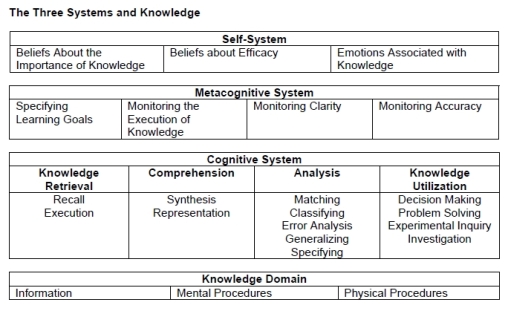Blogging the Online Learning Consortium International Conference 2014
Presenters: Teresa Ferrer (Excelsior College, USA) and Jane A LeClair (National Cybersecurity Institute (NCI) at Excelsior College, USA)
Presentation PowerPoint and Abstract
Discussion of MOOCs: participation, credit, completion rate, the model of students tasting a MOOC, interaction in MOOCs, etc. (I would add the difference between xMOOCs and cMOOCs and everything in between). Students need self-directed learning skills (SDL).
Marzano’s New Taxonomy of learning objectives

Research question: How can we align the MOOC with Marzano’s levels of processing?
The MOOC included an interactive self-check, videos, quizzes, links, and two discussions per week
This research was exploratory. Quizzes were aligned with cognitive system; discussions aligned with metacognitive system; and self-checks and videos were aligned with the self-system.
Future work would include surveying students after they finish the MOOC; analyze student suggestions in the MOOC.
We got into an interesting discussion on videos. The participants didn’t like 3-5 minutes – they wanted them shorter. LIke maybe 30 seconds – just to capture interest. It was the self-checks – where they labelled things, moved things around, etc – that they really enjoyed. They wanted more of those.
We got into another interesting discussion on self-directed learning – as more intrinsic and for yourself. But then do you need badges if you are doing self-directed learning? It’s like a basic level of gaming. I check things off; I get things checked off; I get a star. It connects to the quantified self movement. Culture is changing – and self-directed learning is growing and evolving.
What Instructional Designers do: take a learning framework and use it to guide the development of a course.
Reflection: This session showed the power of MOOCs as a source of research data. About 4500 students; about 400 finished; about 300 did the survey on the course. Still very high response rate for the students who completed.

